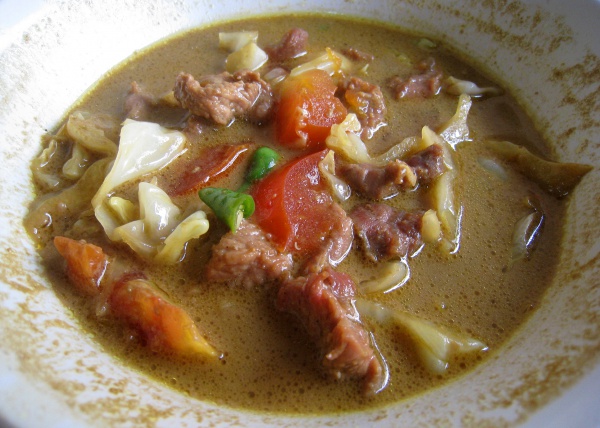Facts About Tongseng
Tongseng is a delectable Indonesian stew cherished in Central Java, particularly in regions like Surakarta and Yogyakarta. This robust dish incorporates goat meat, mutton, or beef simmered in a curry-like broth enriched with vegetables and a sweet soy sauce known as kecap manis.
The term "tongseng" is derived from the Javanese word "osengan" meaning stir-frying, which accurately describes its method of preparation. To create tongseng, the process begins by sautéing a combination of garlic, shallots, spices, and herbs in palm oil until they release an enticing aroma. Subsequently, diced meat is added and cooked until tender. The inclusion of sweet soy sauce and tamarind juice imparts the stew's distinctive flavor, while shredded cabbage and sliced tomatoes introduce a fresh element. Some variations also feature coconut milk and bird's eye chili for an added punch. Tongseng is typically enjoyed with steamed rice.
Traced back to the fusion of goat satay and spicy gulai soup, tongseng likely originated in Java between the 18th and 19th centuries. It was influenced by the culinary traditions of Arab and Muslim Indian settlers during the colonial period. The advent of sugar plantations in Central Java led to the production of palm sugar and the creation of kecap manis, which has become a quintessential ingredient in tongseng.

 Timor Leste
Timor Leste